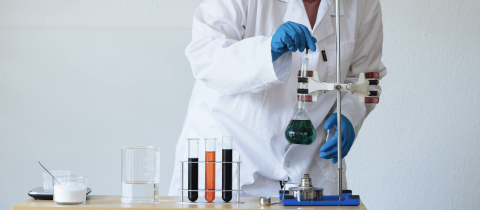We know that Ms. Food Babe’s scientific knowledge is negligible. Especially when it comes to understanding the difference between hazard and risk. This is important especially when it come to understanding the International Agency for Research on Cancer’s listing of chemicals as being carcinogenic. This list is based on hazard, not risk. Hazard can be defined as a potential source of harm or of some adverse health effect. Risk is the likelihood that exposure to a hazard causes harm or some adverse effect. If a substance is placed in IARC’s Group 1, it means that there is strong evidence that the substance can cause cancer, but it says nothing about how likely it is to do so. That likelihood depends on several factors including innate carcinogenicity, extent of exposure and personal liability. Ultraviolet light, a component of sunlight, is a good example to illustrate the difference between hazard and risk.
Light can be thought of as being composed of packets of energy called photons. When a photon impacts a molecule of DNA it can damage it, triggering an irregular multiplication of cells, in other words, cancer. X-rays are also made up of photons, but these are more energetic than the photons of ultraviolet light so they are more likely to damage DNA. Although both sunlight and X-rays are in Group 1, X-rays are clearly more capable of triggering cancer than sunlight. But exposure matters. A single chest X-ray is not a problem but repeated baking in the sun is. More photons of lower energy can have a greater effect than fewer photons of greater energy. Then there is individual liability. A person with dark skin is less at risk for developing cancer than someone with pale skin even at the same ultraviolet light exposure.
Inhaled sand is also listed in Group 1. That’s because studies have shown that workers engaged in occupations that can result in inhaling sand show a significantly increased risk of cancer. But this doesn’t mean that going to the beach and frolicking in the sand is a risky business. Tobacco smoke is also in Group 1because there is no doubt that it causes lung cancer. In fact about ninety percent of all lung cancer cases can be attributed to smoking. Alcohol is also in this category because it is known to increase the risk of oral cancers as well as breast cancer, yet nobody worries about drinking a glass of wine. Listing processed meat in IARC’s Group 1 just says that like alcohol, like tobacco, like sunshine, and some 180 other chemicals, mixtures and exposure circumstances, it is capable of causing cancer. It does not mean that if you have a bacon lettuce and tomato sandwich you are putting yourself at risk. Vani Hari herself is a good example of a hazard. She has the potential to do harm. But if you ignore her mindless anti-GMO rants, she presents little risk.







